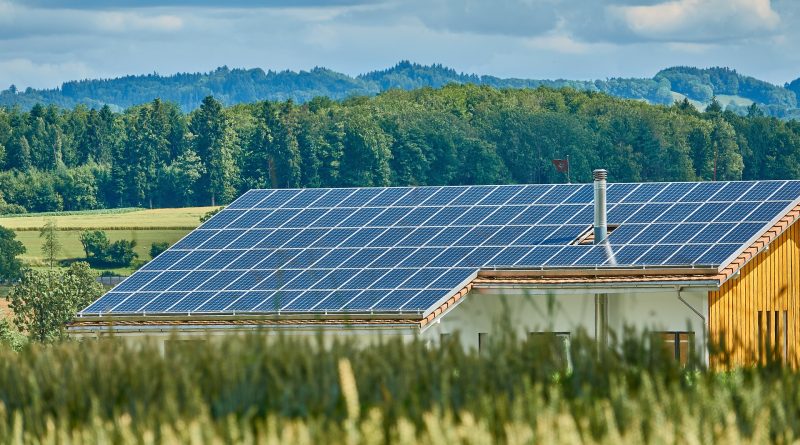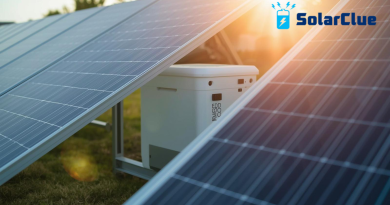Exploring Off-Grid Solar: How It Works
Off-grid solar power installations have gained significant popularity in recent years as an alternative to traditional electricity sources. These systems provide a sustainable and environmentally friendly solution for those seeking energy independence. However, a common question that arises is whether off-grid solar power installations actually work. In this blog, we will delve into the details of how off-grid solar power installations function and discuss their effectiveness in meeting the energy needs of individuals or households.
Table of Contents
Understanding Off-Grid Solar Power Installations
Off-grid solar power installations are designed to operate independently from the electric grid. Unlike grid-tied systems that rely on utility lines to provide electricity, off-grid installations store generated power in batteries for later use. The core components of an off-grid solar power system include solar panels, charge controllers, batteries, and an inverter. The solar panels capture sunlight and convert it into direct current (DC) electricity, which is then sent to the charge controller. The charge controller regulates the charging process to prevent overcharging and ensures the battery is efficiently filled. The stored energy in the batteries is later converted into alternating current (AC) electricity by the inverter, which can then be used to power electrical appliances.
Working Principle of Off-Grid Solar Power Installations
To understand whether off-grid solar power installations work or not, let’s break down the working principle into three phases: generation, storage, and conversion.
1. Generation Phase
During the generation phase, solar panels play a crucial role in harnessing sunlight and converting it into usable electricity. The semiconductor material within the solar panels absorbs photons from sunlight, resulting in the creation of an electric current. This current is then channeled towards the charge controller for further processing.
2. Storage Phase
In the storage phase, the charge controller regulates the charging of the batteries connected to the solar installation. This prevents overcharging, which can be harmful to the battery’s lifespan. The energy generated by the solar panels is stored in these batteries and can be utilized when the sun is not shining or during periods of high energy consumption.
3. Conversion Phase
The final phase of off-grid solar power installations is the conversion phase. This is where the stored energy in the batteries is converted from DC to AC power using an inverter. The AC power can then be used to operate various electrical appliances and meet the energy demands of the user.
Advantages of Off-Grid Solar Power Installations
Now that we understand the working principle of off-grid solar power installations, let’s explore the advantages they offer.
1. Energy Independence
One of the primary reasons people opt for off-grid solar power installations is the ability to achieve energy independence. With these systems, individuals or households no longer rely on centralized power grids, reducing their vulnerability to blackouts or energy fluctuations. This self-sufficiency allows for a continuous power supply, regardless of external factors.
2. Environmental Sustainability
Off-grid solar power installations are often viewed as an environmentally friendly alternative to traditional energy sources. They produce clean energy by harnessing the power of the sun, reducing reliance on fossil fuel-based electricity generation. By choosing off-grid solar power, individuals contribute to a more sustainable future and do their part in combatting climate change.
3. Cost Savings
Though the initial investment for off-grid solar power installations may be higher compared to traditional grid-tied systems, they offer long-term cost savings. By generating their own electricity, users can significantly reduce or eliminate their monthly utility bills. Additionally, with minimal maintenance requirements, the overall operational costs of off-grid solar power installations remain relatively low.
Challenges of Off-Grid Solar Power Installations
While off-grid solar power installations have numerous advantages, they are not without their challenges. It is important to consider these factors before opting for an off-grid system.
1. Upfront Costs
As mentioned earlier, the initial investment for off-grid solar power installations can be higher compared to grid-tied systems. The cost of solar panels, batteries, charge controllers, and inverters need to be taken into account when planning for an off-grid system. However, it is essential to consider the long-term cost savings and potential return on investment.
2. Battery Maintenance
Batteries are an integral part of off-grid solar power installations, storing the energy generated during peak sunlight hours for later use. However, batteries require regular maintenance to ensure optimal performance and longevity. Periodic inspections, cleaning, and replacement of damaged batteries may be necessary, adding to the ongoing operational costs.
3. Limited Energy Storage Capacity
Off-grid solar power installations rely on batteries for energy storage, and these batteries have limited capacity. It is crucial to have a sufficient battery bank to store enough energy to meet the user’s energy demands during periods of low sunlight or high consumption. Oversizing the battery system and proper energy management strategies are vital to ensure uninterrupted power supply.
Conclusion
Off-grid solar power installations do work and provide a sustainable and reliable source of electricity for those seeking energy independence. These systems offer advantages such as energy independence, environmental sustainability, and cost savings. However, it is important to consider the challenges associated with off-grid installations, including upfront costs, battery maintenance, and limited energy storage capacity. By understanding the working principle and weighing these factors, individuals can make an informed decision when considering off-grid solar power installations. With the continued advancements in technology and increasing affordability, off-grid solar power is poised to play a significant role in our transition towards a renewable energy future.
Ready to break free from the grid? Explore the possibilities of off-grid solar with SolarClue®. Embrace independence and power your life sustainably.
Frequently Asked Questions
Off-grid systems operate independently, relying on batteries for storage, while on-grid systems are connected to the utility grid.
Yes, off-grid systems can be installed in urban areas, providing energy independence and backup during power outages.
Key components include solar panels, a charge controller, batteries for energy storage, an inverter, and a backup generator if needed.
Battery storage allows off-grid systems to provide power even on cloudy days, ensuring a continuous energy supply.
System capacity can be customized to meet specific energy demands, making off-grid solutions suitable for various applications.
Regular maintenance includes cleaning solar panels, checking battery health, and ensuring all components are in working order.
Yes, off-grid systems are commonly used for residential applications, providing energy independence and reducing reliance on the grid.
Off-grid systems are typically designed for self-sufficiency and don’t feed excess energy back into the grid for compensation.
Battery lifespan varies but is generally around 5 to 15 years, depending on the type and usage.
In some regions, incentives and rebates may be available to encourage the adoption of off-grid solar systems, promoting sustainability.


